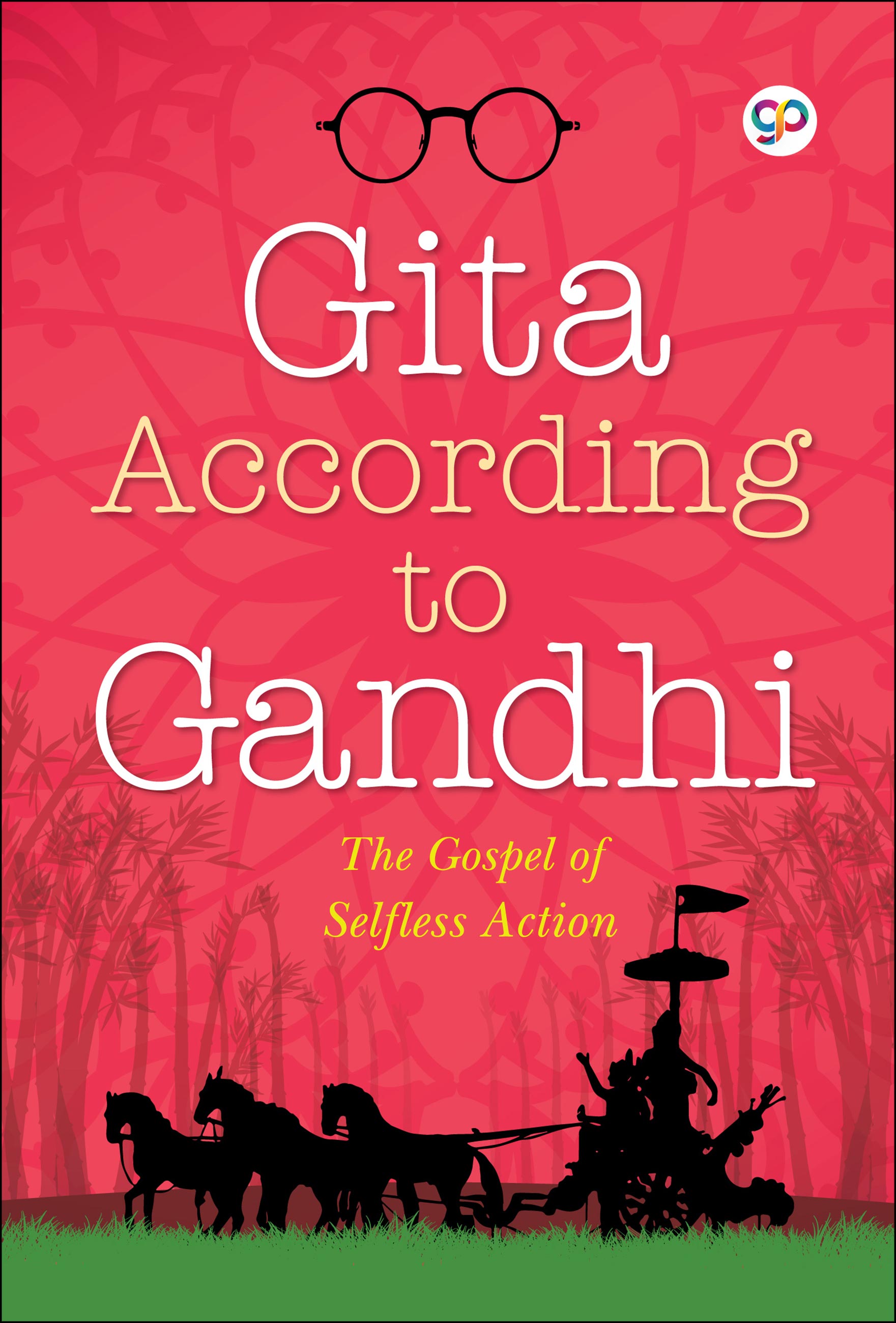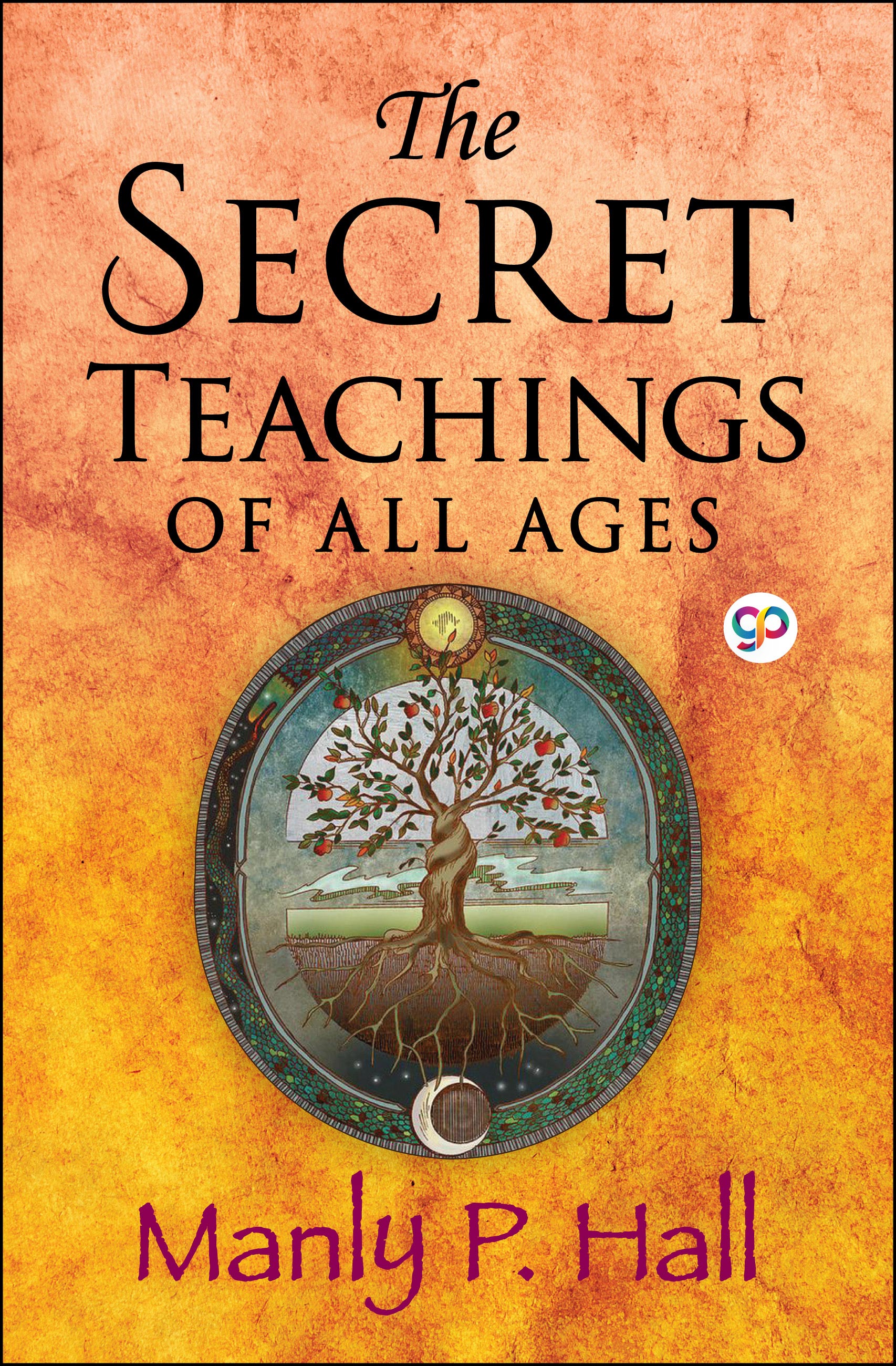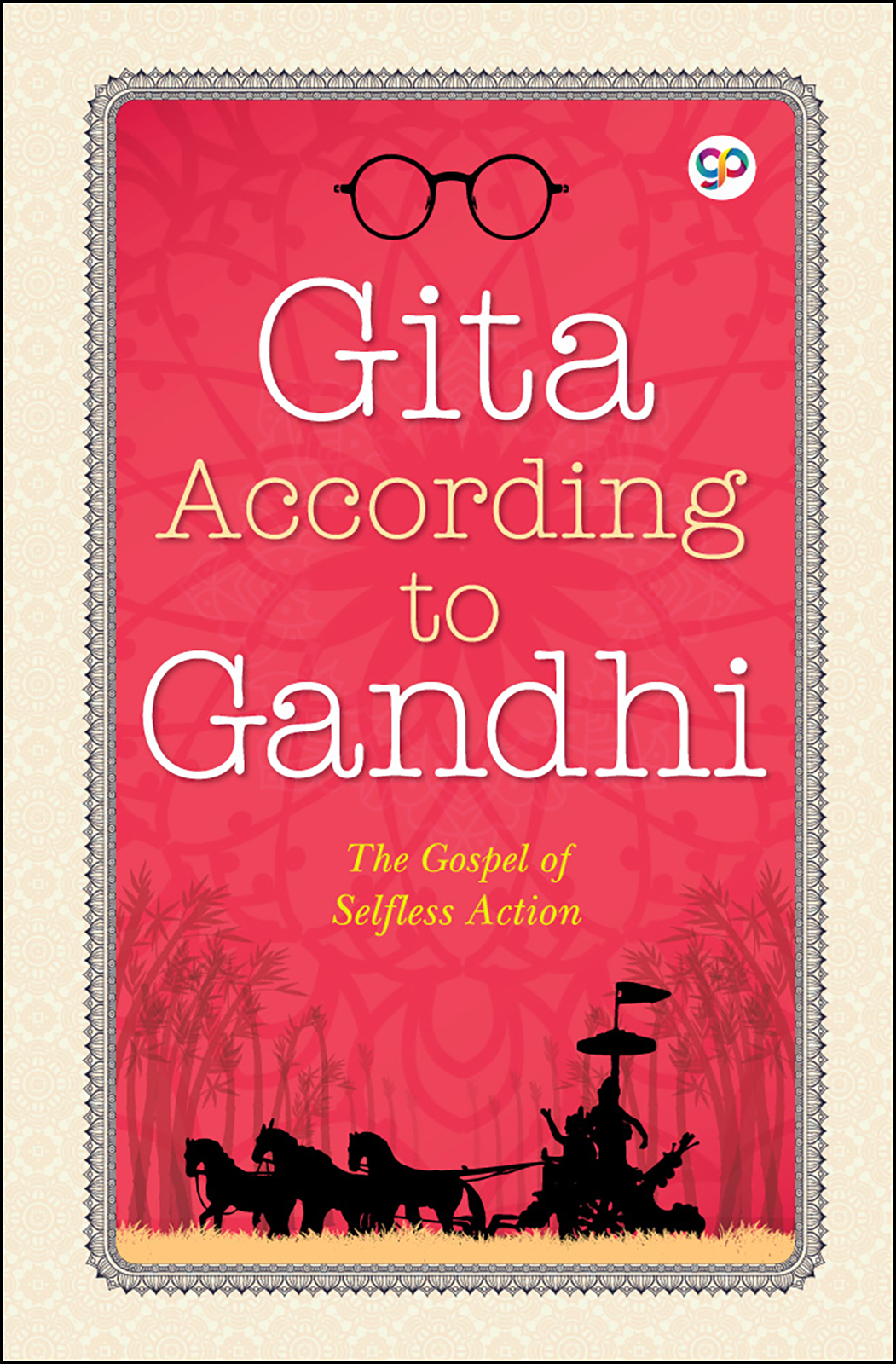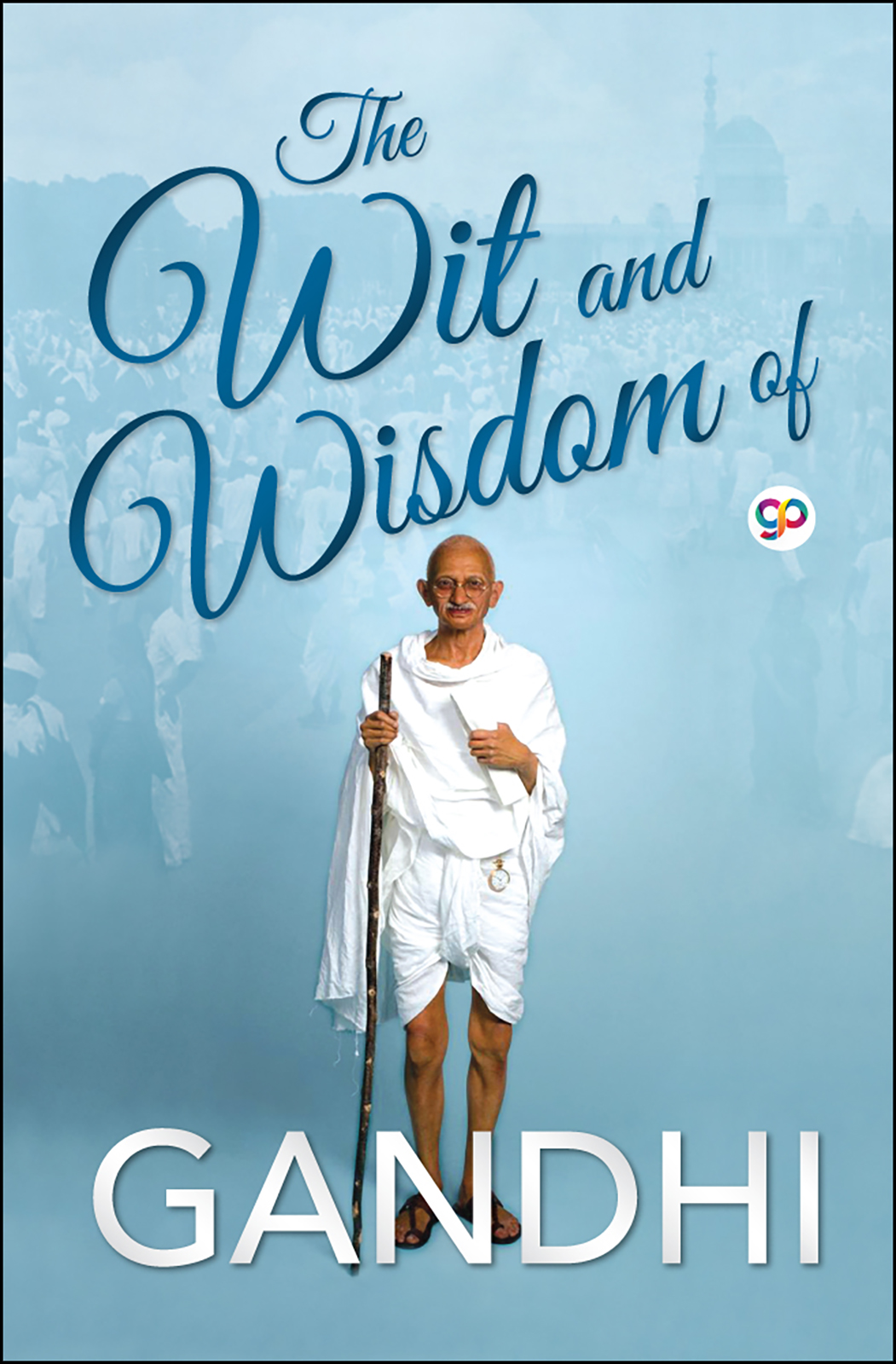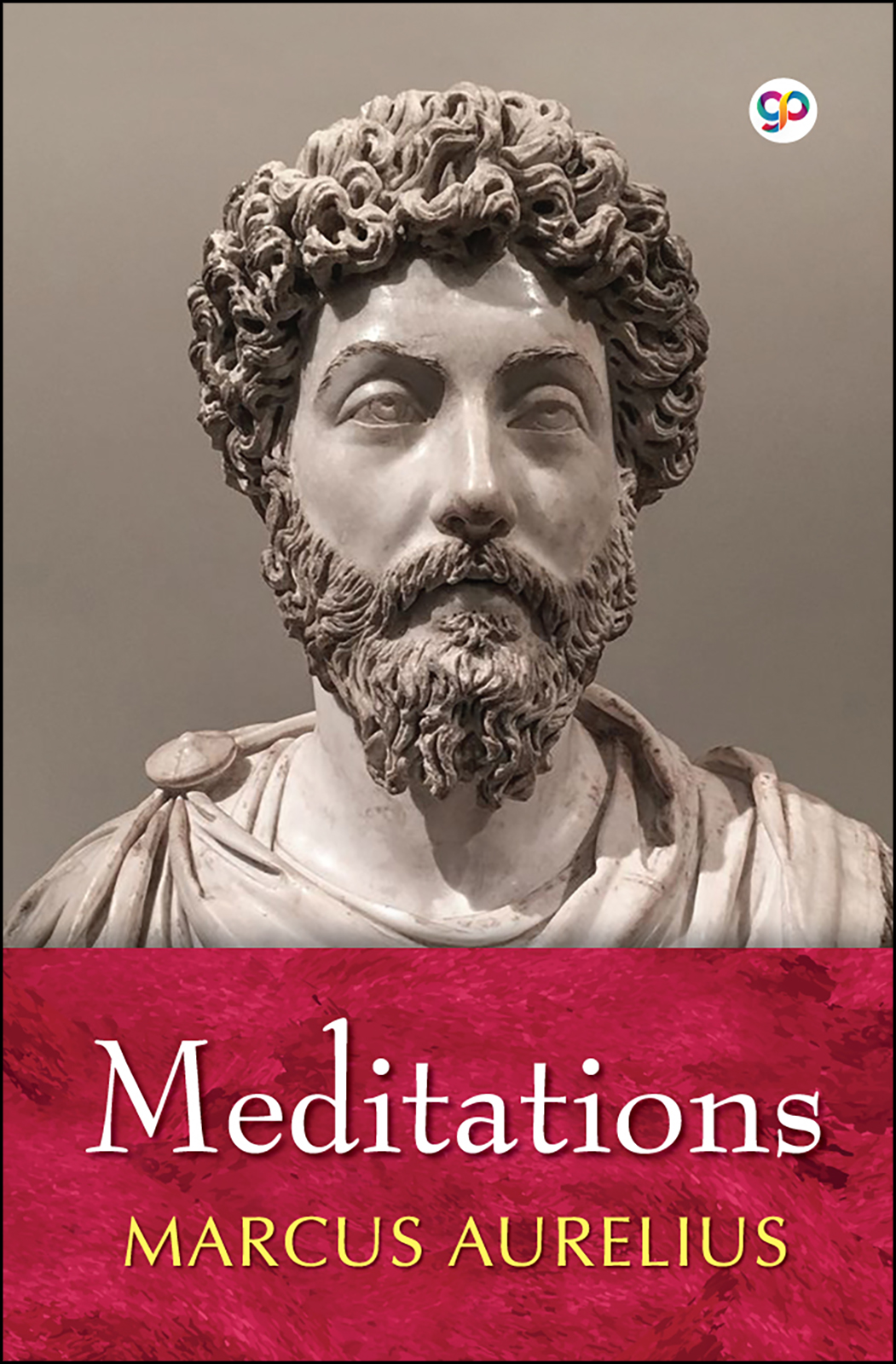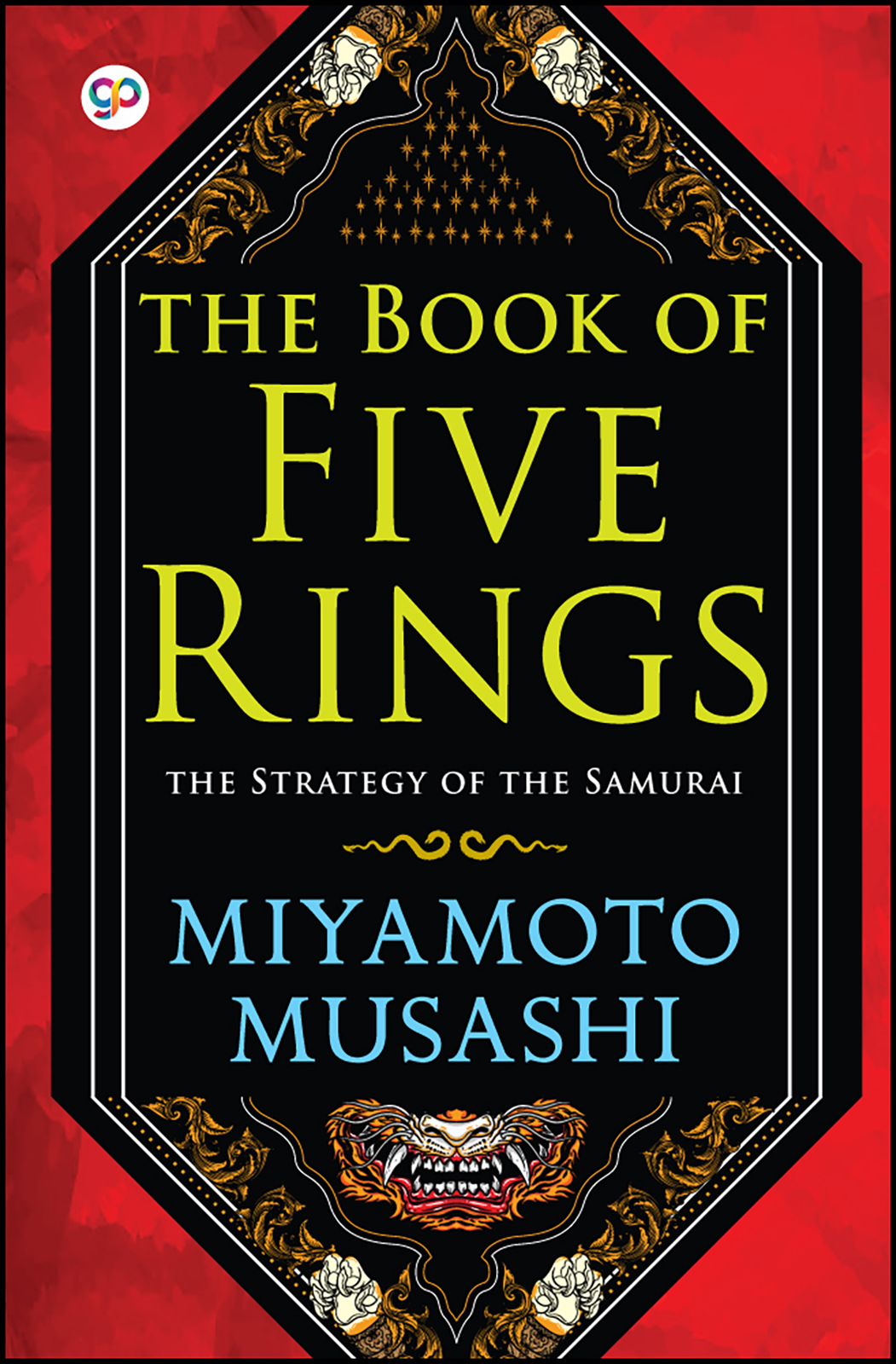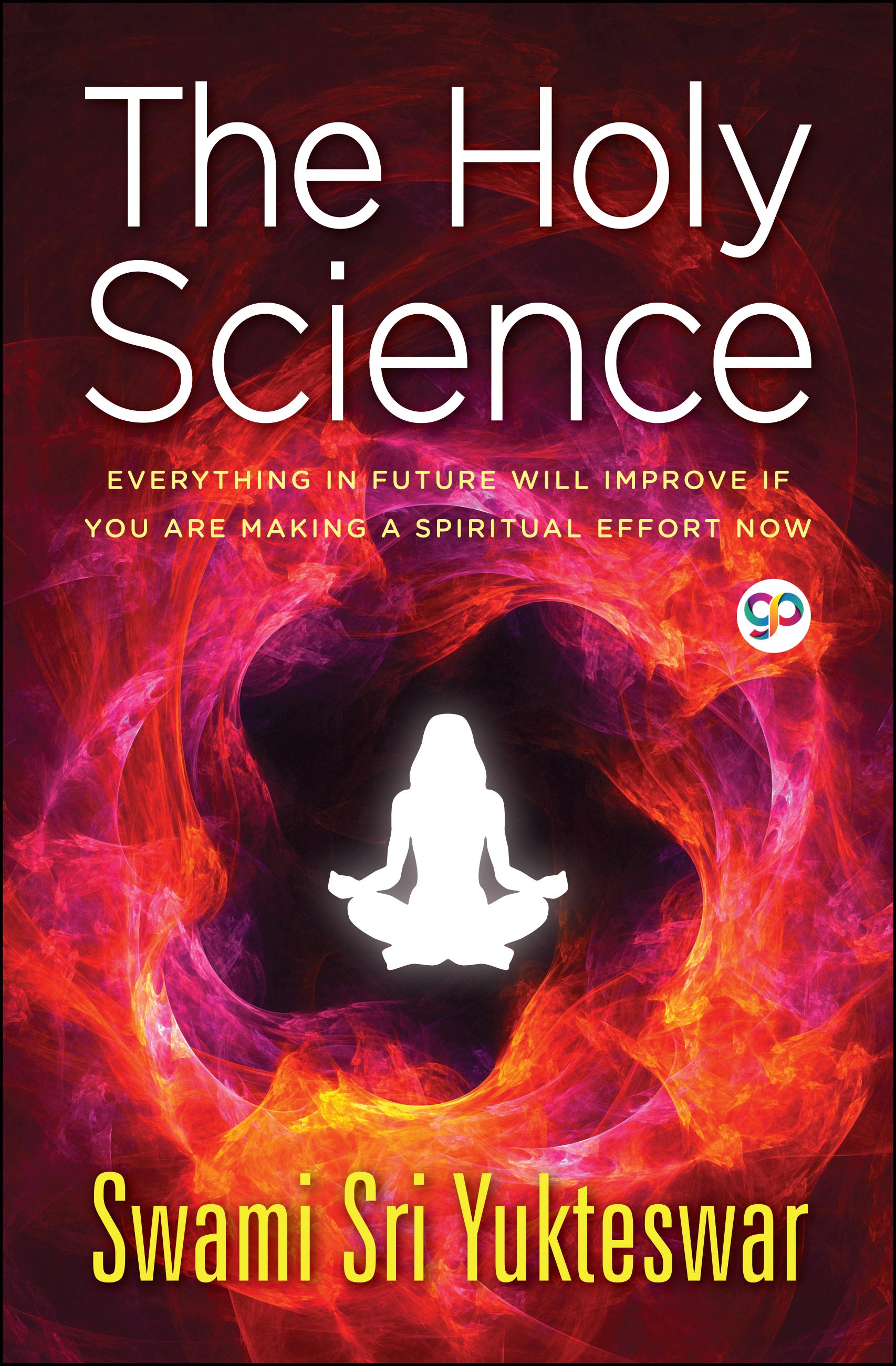
The Holy Science (eBook)
‘The Holy Science’ was written by Sri Yukteswar at the behest of Mahavatar Babaji. In it, Sri Yukteswar compares Sanskrit slokas to the writings of the New Testament. Also explained is the great cycle of world ages (yugas). Yukteshwar was an educator, astronomer, a Jyotisha (Vedic astrologer), a yogi, and a believer in the Bhagavad Gita and the Bible. He was a disciple of Lahiri Mahasaya of Varanasi and a member of the Giri branch of the swami order. "The purpose of this book is to show as clearly as possible that there is an essential unity in all religions; that there is no difference in the truths inculcated by the various faiths; that there is but one method by which the world, both external and internal, has evolved; and that there is but one Goal admitted by all scriptures."—Swami Sri Yukteswar Giri
BEST SELLERS
About the Author
Yukteswar was an educator, astronomer, a Jyotisha (Vedic astrologer), a yogi, and a scholar of the Bhagavad Gita and the Bible. Yukteswar's teacher guru, who guided his spiritual development, was Lahiri Mahasaya. In 1894, Lahiri Mahasaya's guru, Mahavatar Babaji, asked Yogteswar to write a book on the underlying harmony between Christian and Hindu scriptures. Yukteswar's book 'The Holy Science' was thus written. Yukteswar took on many disciples. Most famously, he was the beloved guru of Paramahansa Yogananda, who brought Yoga to the West through moving to America, and through his book, Autobiography of a Yogi , which mentions Yukteswar extensively. Another of Yukteswar's disciples, Satyeswarananda Giri , also wrote yogic books at the encouragement of Yukteswar.
Read Sample
Chapter 1 : The Gospel
SUTRA 1
“Parambrahma (Spirit or God) is infinite, complete, without start or end. It is one, undividable Being.”
The Eternal Father, God, Swami Parambrahma, is the only Real Substance, Sat, and is all in all in the universe.
Why God is not Comprehensible
Man possesses eternal faith and believes intuitively in the existence of a Substance, of which the objects of sense – sound, touch, sight, taste, and smell, the component parts of this visible world – are but properties. As man identifies himself with his material body, composed of the aforesaid properties, he is able to comprehend by these imperfect organs these properties only, and not the Substance to which these properties belong. The Eternal Father, God, the only Substance in the universe, is therefore not comprehensible by man of this material world, unless he becomes divine by lifting his self above this creation of Darkness or Maya. See Hebrews 11:1 and John 8:28.
“Now faith is the substance of things hoped for, the evidence of things not seen.”
“Then said Jesus unto them, When ye have lifted up the son of man, then shall ye know that I am he.”
SUTRA 2
“In Parambrahma is the source of all knowing and love, the root of all power and joy.”
Prakriti or Nature of God
The Almighty Force, Sakti, or in other words the Eternal Joy, Ananda, which produced the world; and the Omniscient feeling, Chit, which makes this World conscious, demonstrate the Nature, Prakriti, of God the Father.
How God is Comprehended
As man is the likeness of God, directing his attention inward he can comprehend within him the said Force and Feeling, the sole properties of his Self – the Force Almighty as his will, Vasana, with enjoyment, Bhoga; and the Feeling Omniscient as his Consciousness, Chetana, that enjoys, Bhokta. See Genesis 1:27.
“So God created man in his own image, in the image of God created he him; male and female Created he them.”
SUTRA 3
“Parambrahma emanates creation, inert Nature (Prakriti), to emerge. From Om (Pranava, the Word, the manifestation of the Omnipotent Force), come Kala, Time; Desa, Space; and Anu, the Atom (the vibratory structure of creation).”
The Word, Amen (Om), is the beginning of the Creation
The manifestation of Omnipotent Force (the Repulsion and its complementary expression, Omniscient Feeling or Love, the Attraction) is vibration, which appears as a peculiar sound: the Word, Amen, Om. In its different aspects Om presents the idea of change, which is Time, Kala, in the Ever-Unchangeable; and the idea of division, which is Space, Desa, in the Ever-Indivisible.
The Four Ideas: the Word, Time, Space, and the Atom
The ensuing effect is the idea of particles – the innumerable atoms, patra or anu. These four – the Word, Time, Space, and the Atom – are therefore one and the same, and substantially nothing but mere ideas.
This manifestation of the Word (becoming flesh, the external material) created this visible world. So the Word, Amen, Om, being the manifestation of the Eternal Nature of the Almighty Father or His Own Self, is inseparable from and nothing but God Himself, as the burning power is inseparable from and nothing but the fire itself. See Revelation 3:14; John 1:1,3,14.
“These things saith the Amen, the faithful and true witness, the beginning of the Creation of God.”
“In the beginning was the Word, and the Word was with God, and the Word was God... All things were made by him; and without him was not anything made that was made... And the Word was made flesh and dwelt among us.”
SUTRA 4
“The fundament of creation is Anu or the Atoms. Together they are called Maya or the Lord’s veil of projection; each individual Anu is called Avidya, Ignorance.”
Atoms the throne of Spirit the Creator
These Atoms, which represent within and without the four ideas mentioned above, are the throne of Spirit, the Creator, which shining on them creates this universe. They are called en masse Maya, the Darkness, as they keep the Spiritual Light out of comprehension; and each of them separately is called Avidya, the Ignorance, as it makes man ignorant even of his own Self. Hence the aforesaid four ideas which give rise to ail those confusions are mentioned in the Bible as so many beasts. Man, so long as he identifies himself with his gross material body, holds a position far inferior to that of the primal fourfold Atom and necessarily fails to comprehend the same. But when he raises himself to the level thereof, he not only comprehends this Atom, both inside and outside, but also the whole creation, both unmanifested and manifested (i.e., “before and behind”). See Revelation 4:6.
“And in the midst of the throne, and round about the throne, Were four beasts full of eyes before and behind.”
SUTRA 5
“The Omniscient Love aspect of Parambrahma is Kutastha Chaitanya. The individual Self, being Its manifestation, is one with It.”
Kutastha Chaitanya, the Holy Ghost, Purushottama
The manifestation of Premabijam Chit (Attraction, the Omniscient Love) is Life, the Omnipresent Holy Spirit, and is called the Holy Ghost, Kutastha Chaiianya or Purushottama, which shines on the Darkness, Maya, to attract every portion of it toward Divinity. But the Darkness, Maya, or its individual parts,” Avidya the Ignorance, being repulsion itself, cannot receive or comprehend the Spiritual Light, but reflects it.
Abhasa Chaiianya or Purusha, the Sons of God
This Holy Ghost, being the manifestation of the Omniscient Nature of the Eternal Father, God, is no other substance than God Himself; and so these reflections of spiritual rays are called the Sons of God – Abhasa Chaiianya or Purusha, See John 1:4,5, 11.
“In him was life; and the life was the light of men.
And the light shine thin darkness; and the darkness comprehended it not.”
“He came unto his own, and his own received him not.”
SUTRA 6
“The Atom, under the influence of Chit (universal knowledge) forms the Chitta or the Consciousness of mind, which when spiritualized is called Buddhi, Intelligence. Its opposite is Manas, Mind, in which lives the self with Ahamkara, Ego, the idea of separate existence.”
Chitta, the Heart; Ahamkara, Ego, the Son of Man
This Atom, Avidya, the Ignorance, being under the influence of Universal Love, Chit, the Holy Spirit, becomes spiritualized, like iron filings in a magnetic aura, and possessed of consciousness, the power of feeling, when it is called Mahal, the Heart, Chitta; and being such, the idea of separate existence of self appears in it, which is called Ahamkara, Ego, the son of man.
Buddhi, the Intelligence; Manas, the Mind
Being thus magnetized, it has two poles, one of which attracts it toward the Real Substance, Sat, and the other repels it from the same. The former is called Sattwa or Buddhi, the Intelligence, which determines what is Truth; and the latter, being a particle of Repulsion, the Almighty Force spiritualized as aforesaid, produces the ideal world for enjoyment (ananda) and is called Anandatwa or Manas, the Mind.
SUTRAS 7-10
“Chitta, the spiritualized Atom, in which Ahamkara (the idea of separate existence of Self) appears, has five manifestations (aura electricities).
They (the five aura electricities) constitute the causal body of Purusha.
The five electricities, Pancha Tattwa, from their three attributes, Gunas – Sattwa (positive), Rajas (neutralizing), and Tamas (negative) – produce Jnanandriyas (organs of sense), Karmendriyas (organs of action), and Tanmatras (objects of sense).
These fifteen attributes plus Mind and Intelligence constitute the seventeen “fine limbs” of the subtle body, the Lingasarira.”
Pancha Tattwa, the Root-Causes of Creation, are the Causal Body
This spiritualized Atom, Chitta (the Heart), being the Repulsion manifested, produces five sorts of aura electricities from its five different parts: one from the middle, two from the two extremities, and the other two from the spaces intervening between the middle and each of the extremities. These five sorts of electricities, being attracted under the influence of Universal Love (the Holy Ghost) toward the Real Substance, Sat, produce a magnetic field which is called the body of Sattwa Buddhi, the Intelligence. These five electricities being the causes of all other creations are called Pancha Tattwa, the five Root-Causes, and are considered the causal body of Purusha, the Son of God.
Three Gunas, the Electric Attributes
The electricities, being evolved from the polarized Chitta, are also in a polarized state and are endowed with its three attributes or Gunas: Sattwa the positive, Tamos the negative, and Rajas the neutralizing.
Jnanendriyas, the Five Organs of the Senses
The positive attributes of the five electricities are Jnanendriyas, the organs of the senses – smell, taste, sight, touch, and hearing – and being attracted under the influence of Manas, Mind, the opposite pole of this spiritualized Atom, constitute a body of the same.
Karmendriyas, the Five Organs of Action
The neutralizing attributes of the five electricities are Karmendriyas, the organs of action – excretion, generation, motion (feet), manual skill (hands), and speech. These organs, being the manifestation of the neutralizing energy of the spiritualized Atom, Chitta (the Heart), constitute an energetic body, called the body of energy, the life force or Prana.
Vishaya or Tanmatras, the Five Objects of the Senses
The negative attributes of the five electricities are the five Tanmatras or objects of the senses of smell, taste, sight, touch, and sound, which, being united with the organs of sense through the neutralizing power of the organs of action, satisfy the desires of the heart.
Lingasarira, the Fine Material Body
These fifteen attributes with two poles – Mind and Intelligence – of the spiritualized Atom constitute Lingasarira or Sukshmasarira, the fine material body of Purusha, the Son of God.
SUTRAS 11, 12
“The aforementioned five objects, which are the negative attributes of the five electricities, being combined produce the idea of gross matter in its five forms: Kshiti, solids; Ap, liquids; Tejas, fire; Marut, gaseous substances; and Akasa, ether.
These five forms of gross matter and the aforesaid fifteen attributes, together with Manas, Mind, sense consciousness; Buddhi, discriminative Intelligence; Chitta, the Heart or power of feeling; and Ahamkara, the Ego, constitute the twenty-four basic principles of creation.”
Gross Material Body
The aforesaid five objects, which are the negative attributes of the five electricities, being combined together produce the idea of gross matter which appears to us in five different varieties: Kshiti, the solid; Ap, the liquid; Tejas, the fiery; Marut, the gaseous; and Wyoma or Akasa, the ethereal. These constitute the outer covering called Sthulasarira, the gross material body of Purusha, the Son of God.
Twenty-Four Elders
These five gross matters and the aforesaid fifteen attributes together with Manas, the Mind; Buddhi, the Intelligence; Chitta, the Heart; and Ahamkara, the Ego, constitute the twenty-four principles or Elders, as mentioned in the Bible. See Revelation 4:4,
“And round about the throne were four and twenty seats; and upon the seats I saw four and twenty elders.”
The aforesaid twenty-four principles, which completed the creation of Darkness, Maya, are nothing more than the development of Ignorance, Avidya; and as this Ignorance is composed only of ideas as mentioned above, creation has in reality no substantial existence, but is a mere play of ideas on the Eternal Substance, God the Father.
SUTRA 13
“This universe is differentiated into fourteen spheres, seven Swargas and seven Patalas.”
Seven Spheres or Swargas
This universe thus described, commencing from the Eternal Substance, God, down to the gross material creation, has been distinguished into seven different spheres, Swargas or Lokas.
7th Sphere, Satyaloka. The foremost of these is Satyaloka, the sphere of God – the only Real Substance, Sat, in the universe. No name can describe it, nor can anything in the creation of Darkness or Light designate it. This sphere is therefore called Anama, the Nameless.
6th Sphere, Tapoloka. The next in order is Tapoloka, the sphere of the Holy Spirit which is the Eternal Patience, as it remains forever undisturbed by any limited idea. Because it is not approachable even by the Sons of God as such, it is called Agama, the Inaccessible.
5th Sphere, Janaloka. Next is Janaloka, the sphere of spiritual reflection, the Sons of God, wherein the idea of separate existence of Self originates. As this sphere is above the comprehension of anyone in the creation of Darkness, Maya, it is called Alakshya, the Incomprehensible.
4th Sphere, Maharloka. Then comes Maharloka, the sphere of the Atom, the beginning of the creation of Darkness, Maya, upon which the Spirit is reflected. This, the connecting link, is the only way between the spiritual and the material creation and is called the Door, Dasamadwara.
3rd Sphere, Szuarloka. Around this Atom is Swarloka, the sphere of magnetic aura, the electricities. This sphere, being characterized by the absence of all the creation (even the organs and their objects, the fine material things), is called Mahasunya, the Great Vacuum.
2nd Sphere, Bhuvarloka. The next is Bhuvarloka, the sphere of electric attributes. As the gross matters of the creation are entirely absent from this sphere, and it is conspicuous by the presence of the fine matters only, it is called Sunya, the Vacuum Ordinary.
1st Sphere, Bhuloka. The last and lowest sphere is Bhuloka, the sphere of gross material creation, which is always visible to everyone.
Sapta Patalas, Seven Churches
As God created man in His own image, so is the body of man like unto the image of this universe. The material body of man has also seven vital places within it called Patalas. Man, turning toward his Self and advancing in the right way, perceives the Spiritual Light in these places, which are described in the Bible as so many churches; the lights like star perceived therein are as so many angels. See 1:12,13,16,20.
“And being turned, I saw seven golden candle sticks, and in the midst of the seven candlesticks one like unto the son of man.”
“And he had in his right hand seven stars...”
“The seven stars are the angels of the seven churches; and the seven candlesticks Which thou Sawest are the seven churches.”
14 Bhuvanas, the Stages of Creation
The abovementioned seven spheres or Swargas and the seven Patalas constitute the fourteen Bhuvanas, the fourteen distinguishable stages of the creation.
SUTRA 14
“Purusha is covered by five koshas or sheaths.”
5 Koshas or Sheaths
This Purusha, the Son of God is screened by five coverings called the koshas or sheaths.
Heart, the 1st Kosha. The first of these five is Heart, Chitta, the Atom, composed of four ideas as mentioned before, which feels or enjoys, and thus being the seat of bliss, ananda, is called Anondamaya Kosha.
Buddhi, the 2nd Kosha. The second is the magnetic-aura electricities, manifestations of Buddhi, the Intelligence that determines what is truth. Thus, being the seat of knowledge, jnana, it is called Jnanamaya Kosha.
Manas, the 3rd Kosha. The third is the body of Manas, the Mind, composed of the organs of senses, as mentioned above, and called the Manomaya Kosha.
Prana, the 4th Kosha. The fourth is the body of energy, life force or Prana, composed of the organs of action as described before, and thus called Pranamaya Kosha.
Gross matter, the 5th Kosha. The fifth and 1 last of these sheaths is the gross matter, the Atom’s outer coating, which, becoming Anna, nourishment, supports this visible world and thus is called the Annamaya Kosha.
Action of Love
The action of Repulsion, the manifestation of the Omnipotent Energy, being thus completed, the action of Attraction (the Omnipotent Love in the core of the heart) begins to be manifested. Under the influence of this Omniscient Love, the Attraction, the Atoms, being attracted toward one another, come nearer and nearer, taking ethereal, gaseous, fiery, liquid, and solid forms.
Inanimate Kingdom
Thus this visible world becomes adorned with suns, planets, and moons, which we call the “inanimate” kingdom of the creation.
Vegetable Kingdom
In this manner, when the action of Divine Love becomes well developed, the evolution of Avidya, Ignorance (the particle of Darkness, Maya, the Omnipotent Energy manifested), begins to be withdrawn. Annamaya Kosha, the Atom’s outer coating of gross matter being thus withdrawn, Pranamaya Kosha (the sheath composed of Karmendriyas, the organs of action) begins to operate. In this organic state the Atoms, embracing each other more closely to their heart, appear as the vegetable kingdom in the creation.
Animal Kingdom
When the Pranamaya Kosha becomes withdrawn, the Manomaya Kosha (the sheath composed of Jnanendriyas, the organs of sense) comes to light. The Atoms then perceive the nature of the external world and, attracting other Atoms of different nature, form bodies as necessary for enjoyment, and thus the animal kingdom appears in the creation.
Mankind
When Manomaya Kosha becomes withdrawn, Jnanamaya Kosha (the body of Intelligence composed of electricities) becomes perceptible. The Atom, acquiring the power of determining right and wrong, becomes man, the rational being in the Creation.



